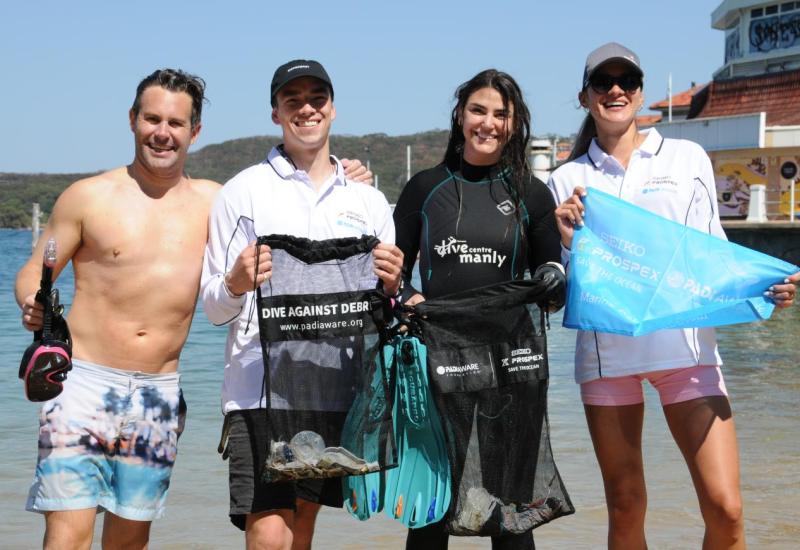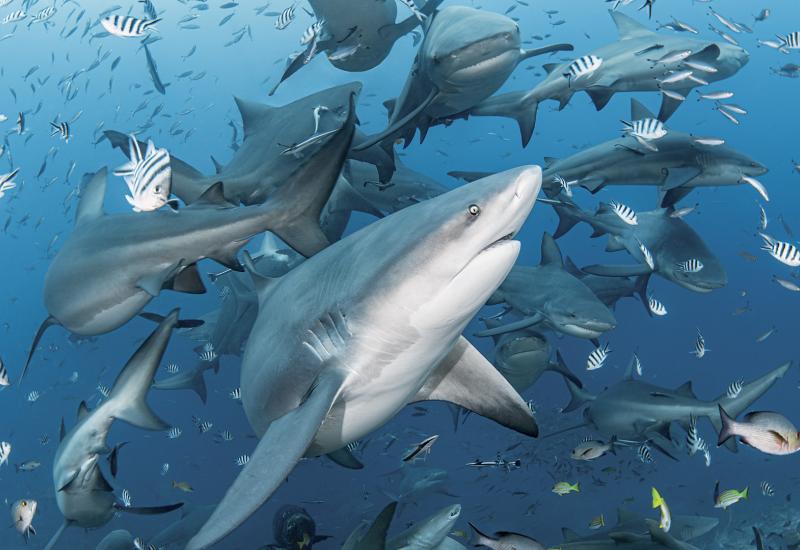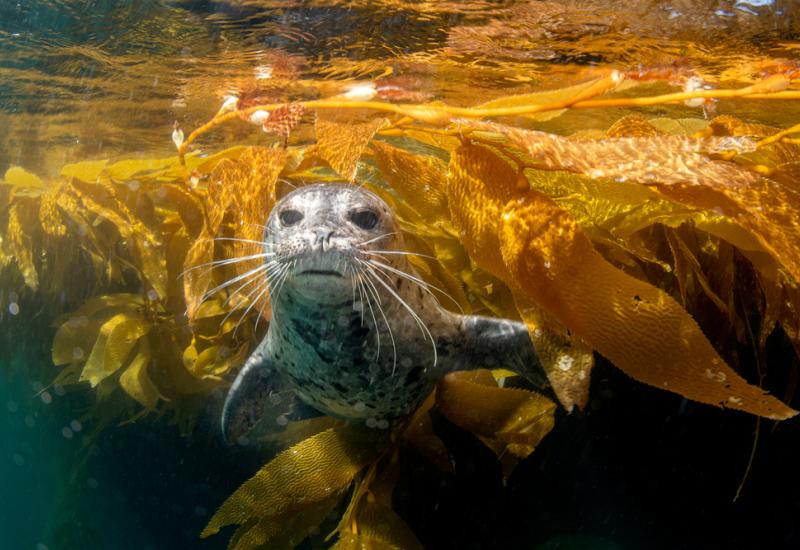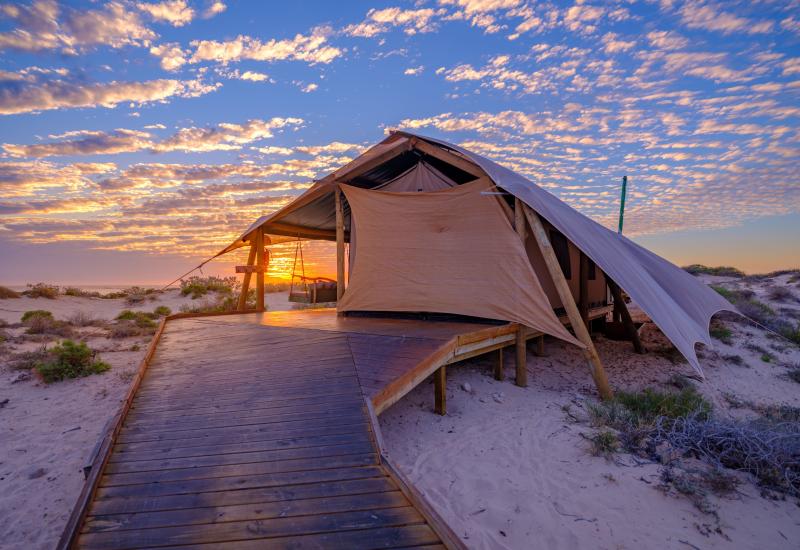Queensland

March 2008
Text and Photography by Stephen Frink & Nick Lucey
 Click here to download the Queensland Wallpapers
Click here to download the Queensland Wallpapers
Saying you want to go to Australia to dive is like saying you want to go to Europe to visit a museum. In both cases, it's a great idea, and you could spend the rest of your life doing it without duplicating your efforts, but you need to know where to go. Australia is the world's largest island, or the world's smallest continent, depending on your point of view. But no matter which way you look at it, it's on the short-list of most divers' "dream dives," and those who go generally make a beeline for Queensland, home of the Great Barrier Reef and jumping-off point for the Coral Sea. Adventurous divers make the pilgrimage to Queensland's remote far northern reefs, which are closer to Papua New Guinea than they are to Cairns. Where you should go depends entirely on what kind of adventure you're looking for, and in a state that's as large western Europe, there are lots of options.
Remote Adventure: Australia's Far North
By Stephen Frink
Sharks of nearly every kind, thousands of turtles and reefs that have yet to be explored make the waters off Queensland's Cape York Peninsula one of the planet's last truly wild places.
You'd think once the word got out that a place boasting encounters with all manner of sharks, manta rays and green turtles, plus incredible 3,000-foot drop-offs and miles of reefs yet to be explored, would soon be the hot new destination for divers. Yet, thanks to its remote location and brief dive season, Queensland's Far North, off Cape York Peninsula, is an experience only a few lucky divers get to have. The live-aboards that offer trips here visit during October and November, Australia's spring.
Southern Small Detached Reef
Far North itineraries can vary, but the first full day of diving often starts on the Southern Small Detached Reef. These gorgeous reefs crown the remnants of an undersea mountain that has its genesis on the seafloor more than 3,000 feet below, and silver-tip sharks and dogtooth tuna cruise the deep blue. At shallower depths, you'll find giant clams and pufferfishes.
My first dive here was at the site Auriga Bay, which gave its name to one of the first live-aboards to cruise the Great Barrier Reef. The structure of the wall is quite nice, with a hard-coral cap that starts in 10 to 20 feet of water and then drops off beyond recreational diving depths. A second dive farther along the same drop-off is Rosie's Wall, offering much of the same topography and marine life. Rosie's is festooned with a spectacular array of corals, gorgonians, long sea whips, soft corals and sponges. These were good dives, and it was nice to have a sense of wilderness, to be alone on a wall dive and realize relatively few have ever visited it before.
Our afternoon dives were at Black Rocks at the northern end of Mantis Reef, one of the most beautiful atolls in the entire region. Everywhere you look, there are fields of pristine staghorn corals, and huge plateaus of boulder and table corals punctuated with antler corals.
Northern Small Detached Reef
Gray and white-tip reef sharks and platoons of barracuda patrol the waters of this collection of reefs. Named for its topography, Grand Canyon is a reef featuring steep walls washed by spectacularly clear water, probably 150 feet of electric blue. Like many of the walls on the Northern Small Detached Reef, Grand Canyon drops off hundreds of feet. Weather can be a big factor here--Grand Canyon can only be dived in calm conditions because there's no place for live-aboards to anchor. Sweetlips, parrotfish, anemonefish and fusiliers are found on every site.
Great Detached Reef
Life is good on the Great Detached Reef, where sharks, barracuda, fusiliers, blue-lined snapper, moray eels, potato cod and turtles sometimes all make an appearance on a single dive. The reefs offer wall diving on their outer edges, steep drop-offs with some small caves. The site Perisher Blue is a hard coral wonderland, and after diving it, I came back to the boat believing once again in the health and bounty of the sea. There were at least three cuttlefish on this dive, a species I pretty much quit photographing by the end of the trip given their abundance throughout the range. Yet the jaw-dropper of the day, maybe of the trip, was a site simply called The Pinnacle.
Up to this point, we hadn't seen much in the way of soft coral, and we hadn't had stellar water clarity due to unseasonably high winds. At The Pinnacle we had stellar visibility and magnificent decoration. The spire rose from 120 feet to within 15 feet of the surface, and each circumnavigation revealed a different wide-angle wonder. Huge soft coral trees, gorgonians dotted with hawkfish and clouds of wrasse dominated the seascape, but a more considered view revealed coral grouper, scorpionfish, lionfish and pufferfish. The Pinnacle was so good we did it as a night dive (terrific) and as an early morning dive (even better).

Raine Island
Raine Island is one of the iconic sites of the Far North itinerary, famous as the nesting site for the world's largest population of green sea turtles--Chelonia mydas.
Encountering more than 250 turtles during an hour in the water is common when you visit during their breeding season (October through February). Adding to the drama during the turtles' nesting season, tiger sharks come in for one of their favorite meals. When the turtles arrive en masse, you get high-voltage diving. We had a final dive at a site simply called Sushi, a reef flat that begins in only 10 feet of water and then gives way to a sand slope at about 45 feet. The shallows provided huge tridacna clams, hard corals and the ubiquitous cuttlefish--there were three surrounding a bit of staghorn.
One cuttlefish was laying its eggs into the crevices as protection from predators. But the Pacific double-saddle butterflyfish knew the routine, for they swarmed in like a bunch of gangbangers, eager to scarf up the eggs. The cuttlefish tried to fight them off, but the butterflyfish were too aggressive and a few eggs were lost.
That is one of the beauties of the Far North. You can drop to 120 feet to photograph a leopard shark, for example, but then there's easy diving in very shallow water. I have a trip to the Far North and Great Detached Reef to plan again. It is so vast and pristine, one trip is not enough.

Queensland Diving: Quick Hits and Long Trips
By Nick Lucey
Great Barrier Reef and Coral Sea itineraries are custom-made to suit your diving personality.
Day Trips
It's possible to sample the Great Barrier Reef's dive delights without investing a week on a live-aboard, especially if you don't have the time to spare and want to see much more of the country. Of course, you won't get to the truly spectacular, more remote reefs, nor can you ever hope to get to the Coral Sea in a day. But you can dive fairly decent reefs, such as Flynn, Hastings, Michaelmas and Milln or the world-famous wreck of the SS Yongala. There are a multitude of day-tripping dive boats based in Cairns, Port Douglas and Townsville. Day-trip boats tend to cater to divers who bring along a nondiver and/or families--they'll be snorkeling, doing introductory dives, and experiencing the Great Barrier Reef. Expect to get in two to three dives in a day trip.

Two- to Six-Day Live-aboards
This is an option if you want to do more than a couple day trips but don't have a week to spend on an extended live-aboard. Queensland is unique among dive destinations for offering this type of live-aboard experience. Sleeping on the boat gives you the flexibility of spending more than one day exploring reefs that made the Great Barrier Reef famous--such as Cod Hole and the Ribbon Reefs. Again, Cairns, Port Douglas and Townsville are your best bets for hooking up with the live-aboard operators that offer these itineraries.
Extended Live-aboards to the Coral Sea
Now we're talking. You didn't come all this way to spend the better part of a day or two on a day boat. Book an extended live-aboard to get out to the Coral Sea. Many of the jaw-dropping underwater photos you see of Australia and the Great Barrier Reef are actually taken in the Coral Sea, where visibility is almost always well into the triple digits, the chance of seeing big animals is quite good, and the schools of fish are bigger than the live-aboard itself. These itineraries usually include Lizard Island, Ribbon Reefs and Osprey Reef. Great choices include the Nimrod Explorer, Spoilsport, Spirit of Freedom and the Taka.
Far North Itineraries
Only a couple of live-aboards offer itineraries--usually ranging in duration from eight to 10 days--to Cape York Peninsula in Queensland's Far North. To get there, you'll make a scenic, one hour, 40-minute flight on a small plane--usually departing from Cairns or Port Douglas--to the airport at Lockhart River. The Nimrod Explorer spends five weeks during October and November in the Far North, including Raine Island, Great Detached Reef, and Southern and Northern Small Detached reefs. To board the Nimrod Explorer, you'll depart from a beach staging area at Portland Roads. Research trips aboard the Undersea Explorer depart from either Port Douglas or Lockhart River.

Name Your Adventure
Eight things you should do before leaving Queensland.
Play in the world's biggest sandbox Fraser Island, the world's largest sand island, is a perfect place to play in the sand. Fraser boasts a 75-mile-long beach that also serves as a runway, and more than 100 freshwater lakes that are suspended by plant matter atop the sand. Act like a kid and run up and down the giant dunes near Orchid Beach, but make sure to protect your camera from the granular particles.
Take a walk through the world's oldest rainforest At over 135 million years young, Daintree River and Cape Tribulation National Park--north of Port Douglas--is the granddaddy of the planet's rainforests. It's home to bats, butterflies, frogs, reptiles and marsupials, and 20 percent of Australia's bird species. The area was named to the World Heritage List in 1988. daintreecoast.com.
Walkabout in the Outback The Outback is not a region per se, but the interior--basically anywhere on the continent that's not on the coast. There's a lonely, serene tranquility to this place, where kangaroos bounce across the prairie and the horizon seems infinite. One place to experience the Outback is the Atherton Tablelands. athertontableland.com.
Experience aboriginal culture The Tjapukai Aboriginal Cultural Park just north of Cairns is dedicated to preserving authentic Aboriginal culture. You can even learn how to play the didgeridoo and throw a boomerang here. tjapukai.com.au.
Drink a real beer If you think you're going native when you drink a Foster's at Outback Steakhouse, think again. Aussies will joke that they export Foster's and keep the good beer for themselves. And when you drink Australia's domestic brews--including Victoria Bitter, Toohey's and Queensland's own XXXX (four-ex), you'll soon understand why.

Climb a bridge Brisbane's Story Bridge Adventure Climb will give you a breathalyzer test, put you in a funny, light-blue jumpsuit and safely lead you over traffic across the 777-meter-long cantilever bridge. Upside? You get a view of Brisbane's skyline that will make you pinch yourself. storybridgeadventureclimb.com.au.
Be like Crocodile Dundee Pick up a pint at the Walkabout Creek Hotel in McKinlay, population 20. The pub/restaurant/hotel/defacto town hall was a filming location for Crocodile Dundee.
Surf some of the world's best breaks Southern Queensland possesses some of Australia's -- and the world's -- best surfing spots, including Noosa Heads, Broadbeach, and a town appropriately called Surfer's Paradise.
Cuddle a koala Pet these cuddly critters on their home turf. Koalas are native to eastern Australia. To see koalas, plus kangaroos, and wombats, visit the Cairns Tropical Zoo, located on Cook Highway near Palm Cove. cairnstropicalzoo/com/au.

InDepth
Getting There & Around: Wherever your final destination is in Australia, you're looking at a loooooong flight, even when you depart from the West Coast. Nonstop flight time from Los Angeles (LAX) to Brisbane (BNE) and Sydney (SYD) is about 14 hours. Continental Airlines is the only U.S. carrier with service to Cairns (CNS) via its Guam hub. If you're primarily diving and don't want to go through Sydney or Brisbane, this is a great option. Getting to the Cape York Peninsula requires additional logistics. After making the flight to Cairns, you must overnight there, and then make a scenic, one hour, 40-minute flight on a small plane to the airport at Lockhart River. Not that it is much of an airport, but it does have a paved runway and fuel. The main village is an Aboriginal settlement of about 450 residents, and this is the gateway to the Iron Range National Park, the largest tract of tropical lowland rainforest remaining in Australia.

The Live-aboards: Only a handful of live-aboards offer itineraries to the Far North. The Nimrod Explorer spends five weeks during October and November in the Far North, including Raine Island, Great Detached Reef, Southern Small Detached Reef and the Hibernia Reef complex. To board the Nimrod Explorer, you'll depart from a beach staging area at Portland Roads, a 30-minute trip from Lockhart River through the rainforest. Rates in 2007 started from $2,245 p.p., dbl. occ., plus an extra fee for the flight to/from Lockhart River and a fuel levy ([email protected], www.explorerventures.com). The Undersea Explorer departs from either Port Douglas or Lockhart River. Rates start from $3,015, depending on the trip, plus an extra fee for the flight to/from Lockhart River and a fuel levy ([email protected], www.undersea.com.au). The Spoilsport (www.mikeball.com), Spirit of Freedom (www.spiritoffreedom.com.au) and Taka (www.takadive.com.au) also offer Great Barrier Reef itineraries.

Water Conditions: Seasons are reversed in Australia. Expect water temps in the mid-80s in summer (December to February) throughout the central and northern Great Barrier Reef, but mid-70s in winter (June to August). Water clarity inside the Great Barrier Reef is affected by tides, current and surge, and averages 50 to 70 feet, with an occasional high of 100 feet. Outside the reef, visibility averages a reliable 60 to 100 feet and often soars to more than 150 feet out in the Coral Sea. In the Far North during October and November (spring), water temps range from 79 to 81 degrees; bring at least a 3mm wetsuit.
Weather: In the tropical north of Queensland, daytime air temps vary from the 80s in winter to the 90s in summer.
Entry Documents: A passport and visa are required. Short-stay visas can be downloaded at www.eta.immi.gov.au.
Money Matters: The Australian dollar (AUS) is the official currency. Departure tax is usually included in airline ticket prices.
Language: English.
Time: Australia has three time zones; Queensland is in the Eastern Standard zone, which is 18 hours ahead of the United States' Pacific Standard.
Electricity: 230/240 volts (50 cycles), although most hotels and motels provide 110 volt AC sockets for electric razors only. For all other equipment, an adapter/converter is necessary.
Local Area Code: 011-61.
Just In Case: There are recompression chambers in Townsville and Brisbane.
Tourism: Tourism Queensland, www.queenslandholidays.com.au, and Tourism Tropical North Queensland, www.tropicalaustralia.com.
For More Information: Get detailed information on Queensland at www.scubadiving.com/travel/pacificandindianoceans/australia.










